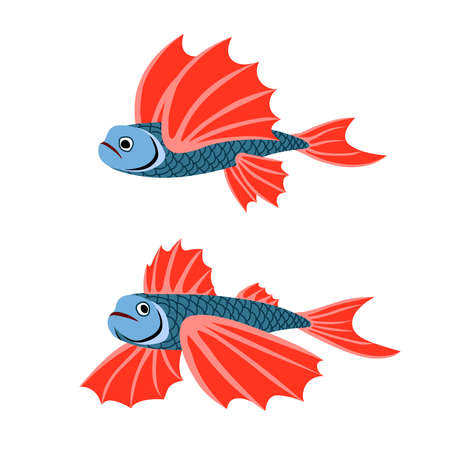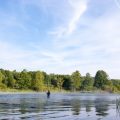Understanding the Atlantic Salmon Lifecycle
To master the art of catching Atlantic salmon in Scottish waters, it is crucial to first comprehend their intricate lifecycle and migratory behaviour. Atlantic salmon (Salmo salar) are renowned for their epic journeys, travelling vast distances from the cold waters of the North Atlantic to spawn in the gravel beds of Scotlands pristine rivers. Scottish salmon typically begin life as eggs laid during the autumn and winter months, hatching into alevins in early spring. These young fish, known as fry and later parr, spend up to three years in freshwater before transforming into silvery smolts and making their way downstream to the sea.
The salmon’s return migration – known locally as the “run” – is one of nature’s most captivating spectacles. Adult salmon navigate back upriver between late spring and early autumn, guided by a combination of environmental cues such as river flow, temperature, and even scent trails imprinted during their juvenile stage. The precise timing of these migrations varies by river system and weather patterns, but understanding these seasonal changes is key to successful angling. Early season fish tend to be larger and more powerful, while grilse (younger, smaller salmon) often arrive later in the summer.
For anglers, recognising how shifts in water temperature, rainfall, and daylight hours influence salmon behaviour and location is vital for selecting effective tactics throughout the year. During periods of high water or after heavy rainfall – often referred to as “spates” – salmon are more likely to move upstream, presenting prime opportunities for those on the banks. Conversely, low water conditions can cause salmon to hold in deeper pools or shaded lies until conditions improve. By aligning your approach with these natural rhythms and the unique characteristics of each Scottish river, you lay the groundwork for an informed and strategic pursuit of this iconic species.
Essential Gear for Scottish Salmon Fishing
When it comes to targeting Atlantic salmon in Scotland, having the right gear is non-negotiable. Local anglers know that the changeable weather and diverse river conditions demand a thoughtful approach to equipment selection. Below, we break down the essentials—rods, reels, lines, and flies—that will help you adapt to Scotland’s unique waters and maximise your chances of success.
Rods: Balancing Power and Precision
Experienced Scottish salmon anglers typically favour double-handed (Spey) rods for larger rivers like the Tay or Spey, while single-handed rods suffice for smaller tributaries. The length and action of your rod should be tailored to both the size of the water and your casting style.
| Rod Type | Recommended Length | Best For |
|---|---|---|
| Double-handed (Spey) | 13–15 ft | Large rivers, long casts, strong flows |
| Single-handed | 9–11 ft | Small rivers, precise casting |
Reels: Reliability in All Conditions
A sturdy reel with a smooth drag is vital—Scottish salmon are notorious for powerful runs. Look for reels with sealed drags to handle wet weather and grit. Capacity should match your line choice, ensuring plenty of backing for those epic battles.
Lines: Adapting to Water Levels and Seasons
Line selection is crucial given Scotland’s ever-shifting river heights and clarity. Floating lines are standard during summer lows, while sinking tips or full sinkers come into play during high water or colder months.
| Line Type | When to Use |
|---|---|
| Floating Line | Low water, summer conditions |
| Sinking Tip/Full Sinker | High water, early spring or late autumn |
Flies: Local Patterns for Local Waters
No kit is complete without a selection of time-tested Scottish fly patterns. Traditional favourites include the Ally’s Shrimp, Cascade, and Stoat’s Tail. Size down in clear water or bright conditions; opt for larger, more vibrant patterns when rivers run high or coloured.
| Fly Pattern | Best Conditions |
|---|---|
| Ally’s Shrimp | All-rounder; especially effective after a spate |
| Cascade | Early season, cold water |
| Purple Stoat’s Tail | Low water, sunny days |
Local Insight: Weather-Proofing Your Kit
The Scottish climate can be unforgiving. Always pack waterproofs for yourself and protective cases for your gear. A good pair of waders is indispensable for access and comfort—opt for breathable varieties in summer and insulated options in colder months.

3. Reading Scottish Waters
Understanding how to read Scottish rivers is an essential skill for any angler targeting Atlantic salmon. Scotland’s waterways, from the mighty Tay to the winding Dee, present a variety of unique features that influence salmon movement and holding positions. To maximise your chances, it’s crucial to interpret these river characteristics effectively and position yourself strategically.
Interpreting River Features
Scottish rivers are shaped by centuries of natural flow, resulting in diverse environments such as gravel runs, deep pools, and rocky outcrops. Salmon favour certain areas depending on water temperature, oxygen levels, and flow speed. Look for seams where fast and slow water converge—these transitional zones often provide resting spots for migrating salmon. Large boulders or submerged tree roots also offer shelter from currents and predators, making them prime locations for fish to pause during their upstream journey.
Pools: The Salmon’s Sanctuary
Pools are iconic features of Scottish rivers and serve as critical holding zones for Atlantic salmon. Not all pools are equal; focus on those with depth variation, a steady inflow of oxygenated water, and some cover from overhanging banks or vegetation. Early in the season, deeper pools are typically more productive due to cooler temperatures. Later, as water levels drop in summer, shallower tail-outs at the end of pools become hotspots as salmon stack up before moving on.
Streams and Glides: Strategic Approaches
Don’t overlook streams and glides—the smoother sections between riffles and pools. These quieter stretches may appear unremarkable but can be excellent ambush points when salmon are running hard. Observe the surface for subtle changes in current or slight boils indicating submerged structure; these cues often signal where a fish might hold briefly. In Scotland’s varied weather, always adapt your tactics—after rainfall, fresh fish may move rapidly through streams that were empty just days before.
Mastering the art of reading Scottish waters not only improves your catch rate but also connects you deeply with the tradition-rich landscape. With careful observation and strategic positioning based on river features specific to Scotland, you’ll be better placed to intercept that prized Atlantic salmon.
4. Time and Tide: Choosing the Best Moments
When it comes to catching Atlantic salmon in Scottish waters, timing is everything. Understanding tidal patterns and key seasonal events such as the renowned June run can dramatically increase your odds of success, especially on legendary rivers like the Tay and Spey.
The Role of Tidal Patterns
Salmon are migratory by nature, moving between saltwater and freshwater during their lifecycle. Tides play a pivotal role in dictating when salmon enter river systems from the sea. On Scottish rivers with estuarine sections, such as the Tay, monitoring tidal changes is crucial. Salmon often move upriver on a rising tide, taking advantage of increased water levels and flow to ease their journey upstream. Anglers who synchronise their fishing sessions with incoming tides often report more consistent catches.
| Tide Phase | Salmon Movement | Optimal Fishing Times |
|---|---|---|
| Rising Tide | Increased upstream migration | Early morning & late evening during high water |
| High Tide | Resting in pools near estuary mouths | Shortly after peak tide as fish move further upriver |
| Falling Tide | Slower movement, fish settle in deeper pools | Lesser activity; focus on holding spots |
The Infamous June Run
No discussion of Scottish salmon fishing would be complete without mentioning the June run. This phenomenon sees large numbers of multi-sea-winter salmon entering rivers like the Spey and Tay, offering anglers some of the finest sport of the year. The timing of this run is influenced by river temperatures, rainfall, and daylight length, but typically peaks from late May through June. Local anglers eagerly anticipate this period, as the quality and size of fish are often exceptional.
Maximising Your Chances During Prime Times
- Be Prepared: During peak runs and favourable tides, ensure you arrive early and secure access to proven pools or beats.
- Adapt Techniques: Use larger flies or spinners to target aggressive early-run fish during high water.
- Stay Informed: Local ghillies and fisheries boards provide invaluable updates on current river conditions and salmon movements.
A Strategic Approach Pays Dividends
Success in Scottish salmon fishing is as much about reading natural cues as it is about skillful casting. By aligning your efforts with both tidal cycles and seasonal runs, you’ll not only enjoy better sport but also gain a deeper appreciation for the rhythms that govern these iconic rivers.
5. Mastering Traditional and Modern Techniques
When it comes to targeting Atlantic salmon in Scottish waters, anglers benefit from a blend of time-honoured tradition and contemporary innovation. The renowned Spey cast, originating on the banks of the River Spey, remains a cornerstone of Scottish fly fishing. This classic technique allows for long, controlled casts even when space is limited by bankside vegetation or high riverbanks—common features on many Scottish beats. With its graceful line management and minimal back-cast requirements, mastering the Spey cast is as much about respecting local heritage as it is about practical success.
However, modern salmon anglers in Scotland also embrace newer methods to adapt to changing river conditions and fish behaviour. Lure fishing with spinning rods and carefully selected baits—such as Toby spoons or Rapalas—has become increasingly popular, especially during periods of high water or when salmon are less responsive to traditional flies. Lure fishing offers flexibility, enabling anglers to cover more water quickly and effectively target holding fish in deeper or faster flows.
The choice between these techniques often comes down to river conditions and personal preference. On low, clear summer waters, a delicate fly presentation via the Spey cast might entice even the wariest salmon. In contrast, after heavy rainfall or during spring runs when rivers run deep and swift, spinning with lures can help reach fish holding tight to the bottom or tucked behind submerged structure.
Ultimately, the skilled Scottish angler recognises that versatility is paramount. By combining traditional skills like the Spey cast with modern approaches such as lure fishing, one can confidently meet the challenges presented by Scotland’s ever-changing rivers—maximising both their chances of hooking a prized Atlantic salmon and their enjoyment of this storied pursuit.
6. Etiquette, Conservation, and Local Regulations
Fishing for Atlantic salmon in Scottish waters is not simply a test of skill and strategy; it is also an activity steeped in tradition, community respect, and environmental responsibility. Observing proper etiquette is fundamental. Always greet fellow anglers, avoid crowding another’s pool, and yield to those fishing downstream if local custom dictates. Respect private beats by seeking permission before entering and adhere to any guidance given by ghillies or river wardens.
Conservation is at the heart of modern salmon angling in Scotland. Practise catch-and-release wherever possible to help maintain healthy stocks. Use barbless hooks to minimise injury, handle fish with wet hands, and keep them in the water as much as possible during release. Avoid fishing during periods of high water temperature or low flow when salmon are most vulnerable. These best practices ensure that future generations can enjoy the thrill of pursuing wild salmon.
Compliance with local regulations is mandatory. Scottish rivers have varied close seasons, daily limits, and restrictions on methods—such as prohibitions on spinning or bait fishing during certain periods. Always check with local fishery boards or angling associations for up-to-date rules before your trip. Fishing without a valid permit or ignoring conservation byelaws can result in fines and harm the reputation of visiting anglers.
By following these principles—respecting both people and the environment—you contribute to the sustainability of Scotland’s iconic salmon fisheries and safeguard this cherished pastime for years to come.


